Peace Tower
Ottawa Canada Visitor Information and Guide
The Peace Tower is one of Canada's most emblematic symbols. Visitors to Ottawa can climb the historic tower and enjoy a spectacular view of the city.
If you visit Parliament Hill between September and June, you can enjoy a carillon performance from noon until 12:15 on weekdays. There is a one hour recital beginning at 11 AM during the summer months.
The Peace Tower Carillon was inaugurated on Canada Day (July 1) in 1927. It was built to commemorate the Armistice of 1918 and Canada's 60th anniversary of Confederation. The carillon has 53 bells.
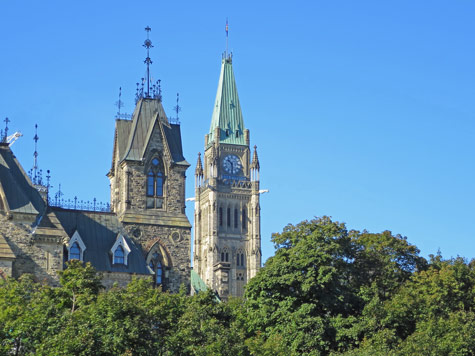
Visitors wising to visit the Peace Tower only must obtain a ticket in advance. The free passes are available at 90 Wellington Street in Ottawa on a first-come first-serve basis.
Tickets are not required if you visit the centre block on a guided tour.


Peace Tower Parliament Hill Ottawa Canada
By: Author Susan Moore
Posted on Last updated: October 29, 2022
Home » Travel » North America » Canada » Peace Tower Parliament Hill Ottawa Canada
On my third attempt I enjoyed a visit to the Peace Tower on Parliament Hill during my solo trip to Ottawa Canada . My first attempt failed due to a scheduled protest on Parliament Hill in the afternoon.
My second attempt I arrived too near closing time but I did receive some useful information from the staff, who told me to arrive 10 minutes or so before opening time at 9:00 am in order to have the best chance of being first in line.
Save to Pinterest for later!

Peace Tower – Centre Block at Parliament Hill Ottawa
A tour of the Parliament Buildings does require a ticket, which is free for the asking on a first-come first-served basis. Tickets are distributed from the tourist information center at 90 Wellington West – directly across the street from Parliament Hill.
For more information check the Visitor Information section of the Parliament of Canada website.

Peace Tower view of Gatineau Quebec and Library of Parliament (right) – Ottawa Canada
The Gothic style Peace Tower, dedicated on July 1, 1927, replacing the Victoria Tower, completed in 1878 but destroyed in a fire in February 1916.
The fire destroyed Center Block of the Parliament Buildings except for the Library of Parliament. Heavy iron safety doors closed by a staff member saved the Library.

Peace Tower Ottawa Parliament Hill – Memorial Chamber

Stained glass at Memorial Chamber – Peace Tower Parliament Hill
What is the purpose of the Peace Tower?
The Peace Tower was created as a memorial to the men and women who died serving their country.
There are seven books of remembrance listing the names of every Canadian who died during military service to their country.
For more details of the Memorial Chamber visit the Veterans Affairs Canada website.

Peace Tower Carillon and Bells
The bells of Peace Tower Carillon were cast at the Gillett and Johnston foundry in Croydon England. The Carillon consists of 53 bronze bells weighing in at 66 tonnes in total.
The bells cover 4 1/2 octaves and during July and August the carillon plays from 11 am to noon on weekdays.
From September to June the Peace Tower Carillon plays from noon to 12:15 pm on weekdays.
More information and photos of the Peace Tower Carillon are available at the Parliament of Canada website.

Peace Tower arched entrance – lion carving completed 1937 – 1938

Peace Tower Parliament Hill Ottawa – unicorn on the east side of arched entrance
I arrived at 8:45 on a Saturday and first in line to visit the Peace Tower. It was beautiful summer day in Ottawa. I chatted with the staff and other people in line while waiting for the 9:00 am opening time.
There is a security check point at the entrance and afterwards an elevator to the observation deck which is located just below the clock face of the Peace Tower.
Clock of the Peace Tower
The clock was modeled after the clock tower known as Big Ben at the British Parliament in London England.

Ottawa Parliament Hill Peace Tower ‘You are here’
The chime for the clock plays on 5 out of the 53 bells of the carillon. The largest bell, known as the bourbon, strikes the hour.

Peace Tower Parliament Hill Ottawa – observation deck below the clock face
I enjoyed wonderful views from the Peace Tower observation deck. I could even see the giant spider sculpture Maman in front of the National Gallery of Canada.

View of Ottawa River from the observation deck of Peace Tower Parliament Hill
In 2014 I also enjoyed a bird’s-eye view of the construction site for the restoration of West Block Parliament Building. Although the scheduled completion date was in 2017 the actual occupancy date was in 2018.

Peace Tower Parliament Hill view West Block construction in 2014
The observation deck of the Peace Tower is off-limits during the Changing of the Guard ceremony on Parliament Hill so I took the elevator back down around 9:45 in order to view the Memorial Chamber.
Afterwards I attended the Changing of the Guard ceremony for the second time. Standing on the steps of the Peace Tower offered a better view than trying to see through the crowd of people. For the best view arrive early – the ceremony begins at 10:00 am during late June through late August.

Mother Beaver sculpture at Peace Tower Parliament Hill

Changing of the Guard Ottawa Parliament Hill
I visited the Peace Tower and Memorial Chamber at 9:00 am, followed by the Changing of the Guard ceremony at Parliament Hill at 10:00 am.
By 11 am I was wandering around ByWard Market then enjoying some brunch before visiting the National Gallery of Canada to view the contemporary art collection .
Peace Tower visitor info Parliament Hill Ottawa Address 111 Wellington St Phone Number +1-(613)-992-4793 Hours CLOSED for renovations (Normal hours: Open daily: 9 am – 4:30 pm) Admission Cost Free; first-come, first-served basis. Tickets available at 90 Wellington St, across from Parliament Hill Tours Guided tours and self-guided options. More info available on tours of Parliament here . How to Get There Bus #1 or #7

IMAGINE PEACE TOWER LIVE FEED
IMAGINE PEACE TOWER lights at: 8pm Reykjavík | 9pm London & Liverpool | 4pm NY | 1pm LA | 5am Tokyo.
Imagine all the people, watch the documentary.
IMAGINE PEACE TOWER
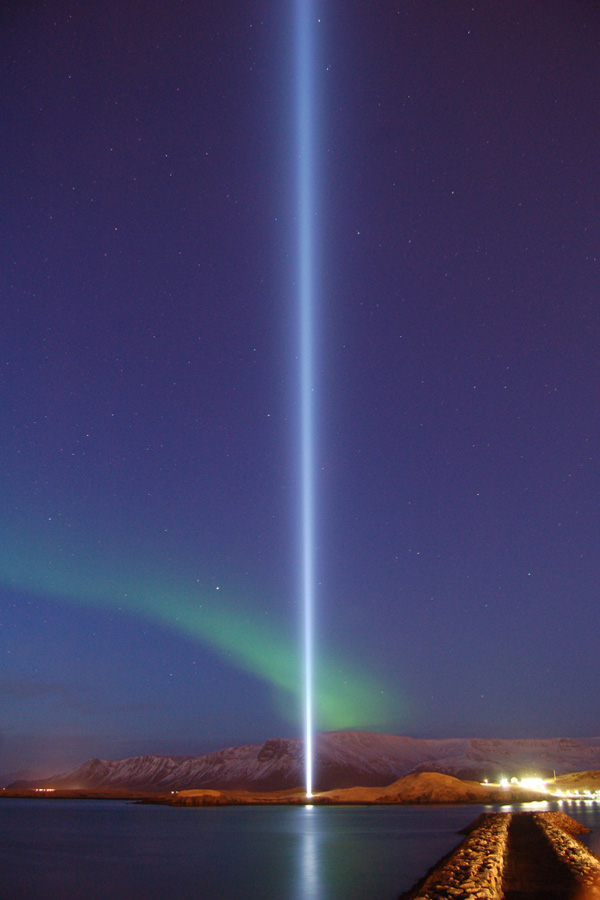
SEND WISHES

LIGHTING TIMES
IMAGINE PEACE TOWER is lit at the following times: • 9 October (John’s birthday): 8pm until morning. • 10 -31 October: 8pm until midnight. • 1 – 30 November: 7pm until midnight. • 1 – 7 December: 6pm until midnight. • 21 – 30 December: 6pm until midnight. • 31 December: 6pm until morning. • 18 February (Yoko’s birthday): 8pm until morning. • 20 – 27 March (John & Yoko’s honeymoon): 8pm until midnight.
MESSAGE FROM YOKO ONO
On October 9th, IMAGINE PEACE TOWER will be relit in Reykjavík, Iceland, in memory of my late husband John Lennon, on the occasion of his birthday.
I hope you will join us in celebrating the relighting of IMAGINE PEACE TOWER in Iceland, on this website and around the world. Remember, each one of us has the power to change the world.
Power works in mysterious ways. We don’t have to do much. Visualize the domino effect and just start thinking PEACE. Thoughts are infectious. Send it out. The message will circulate faster than you think.
It’s Time for Action. The Action is PEACE Think PEACE, Act PEACE, Spread PEACE PEACE is POWER!
Thank you, thank you, thank you I love you!

Yoko Ono Lennon

IF YOU ARE IN ICELAND on 9 OCTOBER
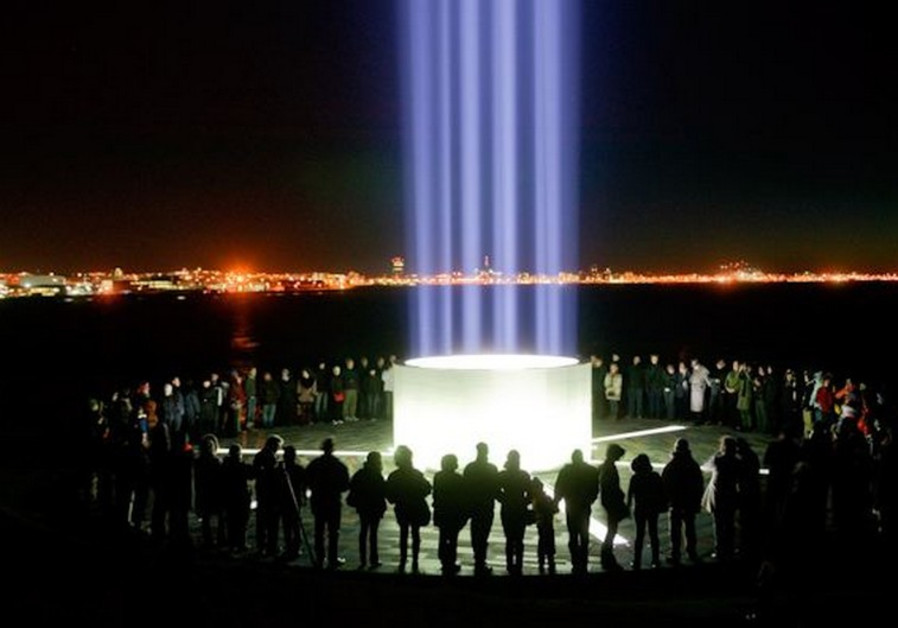
8pm Reykjavík 9pm London/Liverpool 4pm New York 1pm Los Angeles 5am Tokyo Other times here .
Free ferry and bus rides will be provided before and after the event. The Reykjavik Art Museum, Reykjavik City Museum, will host a program on Viðey starting at 5:45 PM and lasting until 9:30 PM.
Valdimar Guðmundsson and Örn Eldjárn will perform music beside the IMAGINE PEACE TOWER, and the Mayor of Reykjavik, Einar Þorsteinsson, will give a speech. It is customary that as soon as the tower is lit, the song Imagine is played, and people will have the opportunity to take photos and share the event on social media.
Ferry and Bus Information Yoko Ono offers free ferry rides to Viðey. The ferry will depart from Skarfabakki from 5:30 PM to 7:30 PM. Ferries will depart from Skarfabakki at 17:30, 18:00, 18:30, 19:00, and 19:30, and return trips will be made as needed. Tickets for the Viðey ferry must be reserved, with a limit of 5 tickets per booking, and a total of 1,200 tickets available. Further information is available on the Elding website.
Free bus rides will be available from Reykjavík City Hall, with a stop at Harpa, and then to Skarfabakki. The first bus will leave City Hall at 17:30, and the service will run until 19:00.
The first ferry after the lighting of the IMAGINE PEACE TOWER will depart from Viðey at 8:30 PM. It will be possible to take a bus from Skarfabakki to Hlemmur from 8:40 PM until all guests have been transported from Viðey.
Program: The Reykjavik Art Museum, Reykjavik City Museum, and others will host a program starting at 5:45 PM and ending at 9:00 PM. • 5:45 PM: A walk led by the Reykjavik Art Museum through works by Richard Serra and Yoko Ono. • 6:00 PM: A history walk led by the Reykjavik City Museum. • 6:45 PM: A walk led by the Reykjavik Art Museum through works by Richard Serra and Yoko Ono. • 7:00 PM: A history walk led by the Reykjavik City Museum.
Program Related to the IMAGINE PEACE TOWER: • 7:45 PM: Valdimar Guðmundsson and Örn Eldjárn perform music by the IMAGINE PEACE TOWER. • 7:58 PM: Einar Þorsteinsson, the mayor, gives a speech. • 8:00 PM: The IMAGINE PEACE TOWER is lit under the song Imagine by John Lennon and Yoko Ono.
Refreshments will be available for purchase at Viðeyjarstofa.
The IMAGINE PEACE TOWER is an outdoor artwork by Yoko Ono, built on Viðey in 2007 and dedicated to John Lennon. The tower is lit annually on Lennon’s birthday, October 9th, and shines until December 8th, the day of his passing. The artwork is a symbol of Ono and Lennon’s contuining work for world peace. The tower is in the form of a wishing well, with the words “IMAGINE PEACE” inscribed on it in 24 languages.
For more information, visit: IMAGINEPEACETOWER.com Reykjavik.is Listasafn Reykjavíkur Borgarsögusafn Reykjavíkur
SEND YOUR WISHES TO IMAGINE PEACE TOWER

Join over 2 million wishes at IMAGINE PEACE TOWER
Discover more.

LISTEN TO JOHN LENNON & YOKO ONO SING & TALK ABOUT PEACE
VIEW MORE IMAGES FROM IMAGINE PEACE TOWER

Language selection
- Français fr
Peace Tower: History and design
At a height of 92.2 metres, the Peace Tower is the dominant feature on Parliament Hill, and probably the most widely recognized symbol of Canada after the flag.
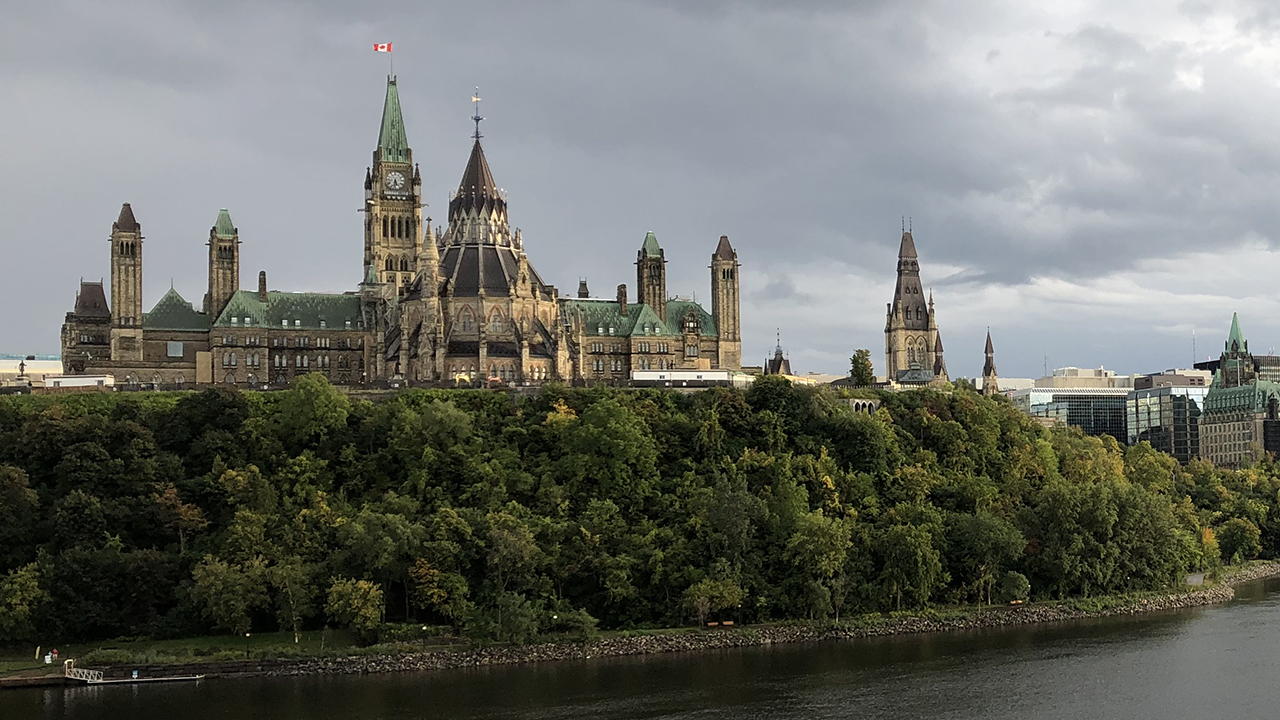
The Peace Tower of Centre Block on Parliament Hill
On this page
Video: soar over the peace tower, changing of the peace tower flag, peace tower clock, peace tower carillon, books of remembrance, stained glass windows, stone carvings, related links.
Enjoy breathtaking aerial images of the Centre Block, the Peace Tower, the grounds of Parliament Hill and the Ottawa River.
Throughout the video, aerial images shot from a drone are shown, and light instrumental music is played in the background.
Medium shot of the Peace Tower, moving north-west towards the Ottawa River.
Close-up of gargoyles under the Peace Tower Clock, circling the tower to the right.
Wide shot of the Centre Block, rising towards the top of the Peace Tower.
Top view of a man raising the Flag of Canada up the Peace Tower pole.
Wide shot of the Centre Block and Parliament Hill grounds, moving north-east between two tall construction cranes.
Overhead shot of the Centre Block, rising towards the top of the Peace Tower.
Cut to black and music stops.
Canada Wordmark
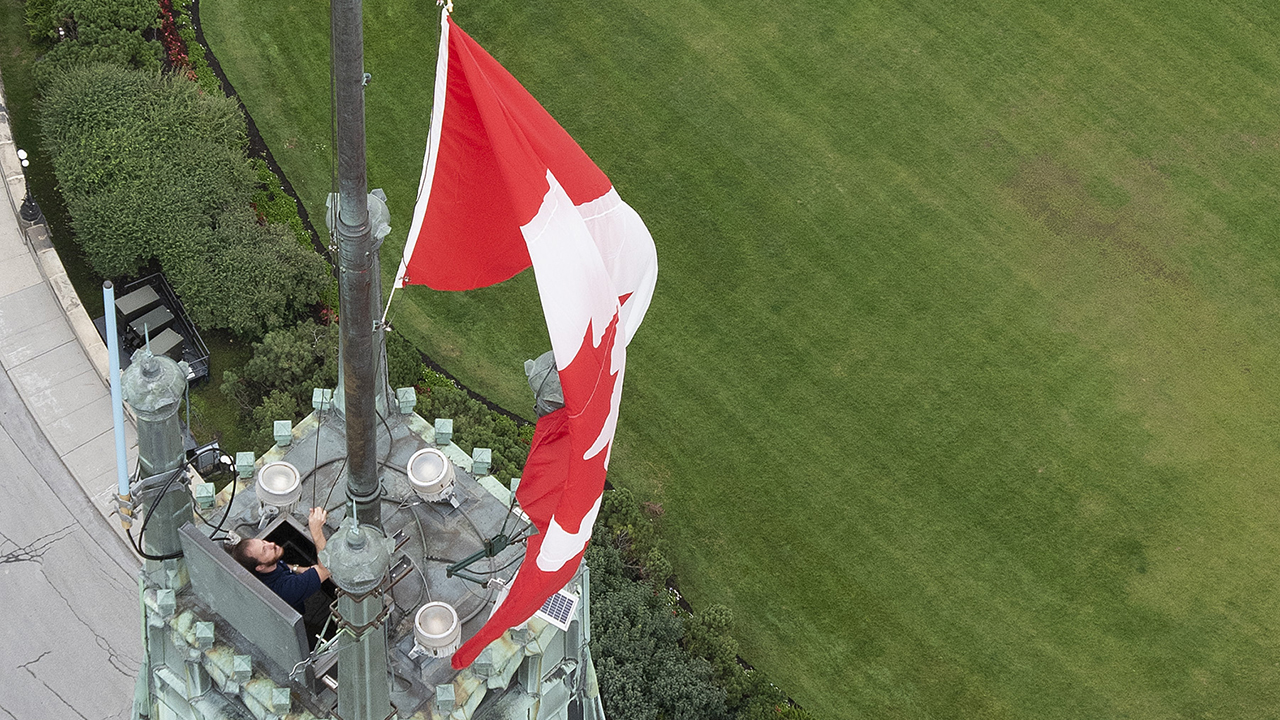
An employee raises the Canadian Flag on top of the Peace Tower (Click to view enlarged image.)
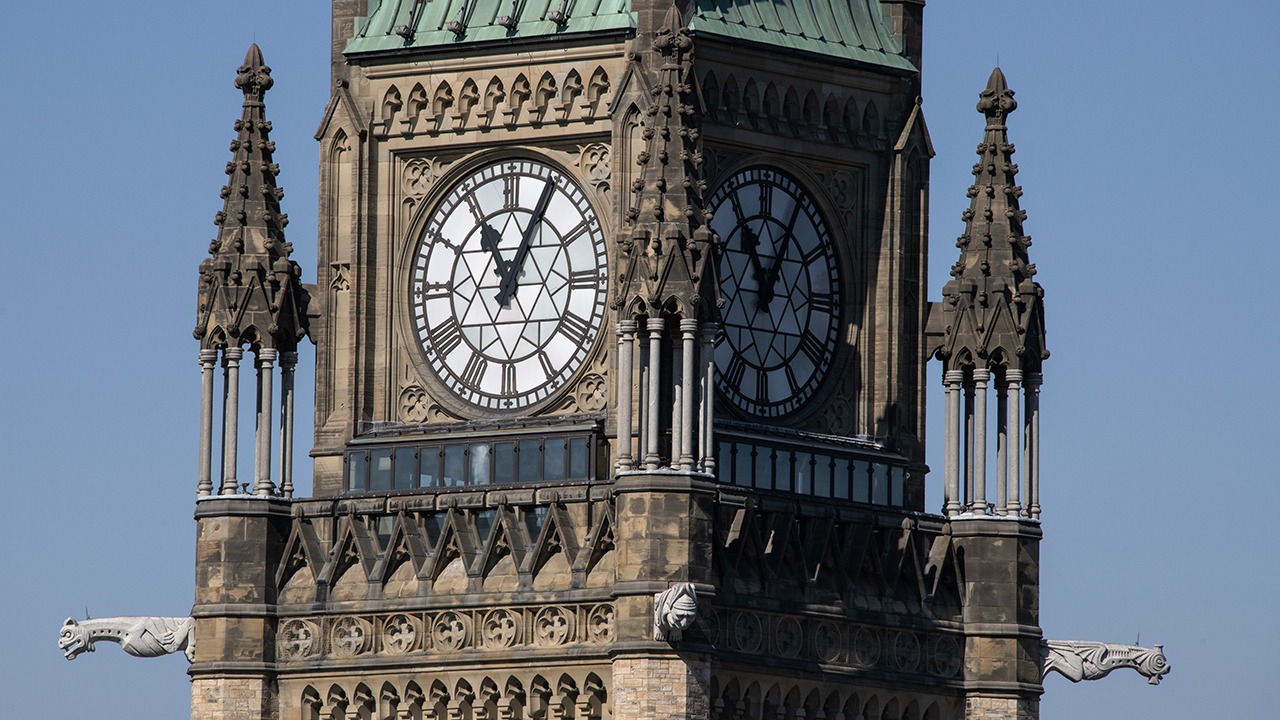
The clock on Centre Block’s Peace Tower (Click to view enlarged image.)
The Peace Tower flag is changed each day from Monday to Friday and on days when it’s flown at half mast. The flag is not changed on statutory holidays or during poor weather.
- Half-masting the National Flag of Canada
- Parliament Hill flags
In 1927, the Peace Tower clock was given to Canada by the United Kingdom. The gift marked the 60th anniversary of Canadian Confederation. The original clock no longer works and has since been replaced.
There are 4 clock faces in total: 1 on each side of the Tower. The hour and minute hands of each face are run by an electric motor. Its controls are located 10 storeys down the Tower on the master clock. The precise timing of the clock is kept by the National Research Council's atomic clock in Ottawa.
Normally, the large clock on the Peace Tower chimes every 15 minutes. It’ s now silent as we restore and modernize the Centre Block.
- The Centre Block project
People are often interested to learn that the Tower's master clock cannot be set back. Therefore, at the end of Daylight Saving Time in autumn, a government employee halts the clock for a full hour overnight. In the spring, the hour hand is moved forward one hour. Its chimes are temporarily disconnected to prevent them from ringing during the process.
Canada's official time
The Peace Tower carillon is one of the oldest and finest carillons in North America. It includes 53 bells and weighs 54 tonnes. These bells range in weight from 10,090 kilograms to only 4.5 kilograms. The bourdon is the largest and heaviest bell and plays the low note E. The smallest and lightest bell plays the A, 4 1/2 octaves higher! The sound you heard each hour was made by the bourdon.
The Peace Tower carillon is being restored as part of the Centre Block project.
A carillon is played from a large keyboard—similar to an organ. The person who plays the bells is called a carillonneur. Carillonneurs play the bells by striking the keys with their fists. To play the larger bells, they must strike the keys with their feet. The bells do not actually swing. Instead, a clapper strikes each bell with the force that the carillonneur uses to strike the key.
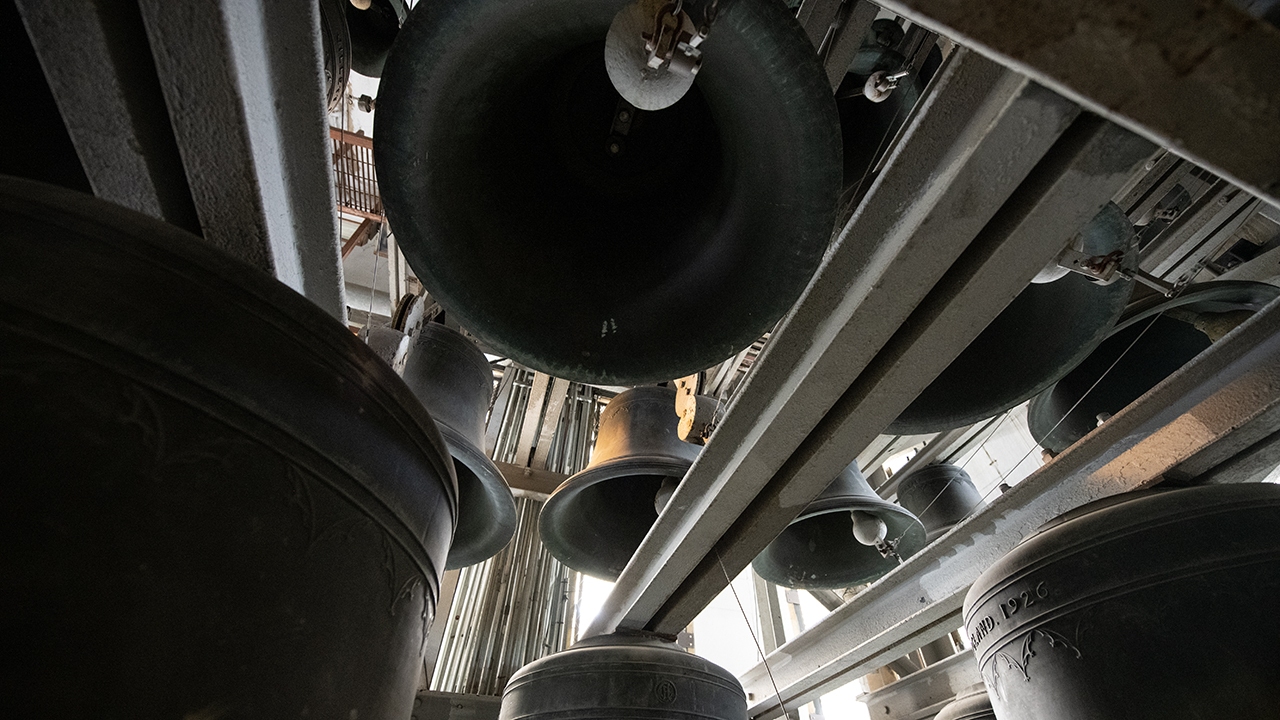
The larger bells in the belfry. (Click to view enlarged image.)
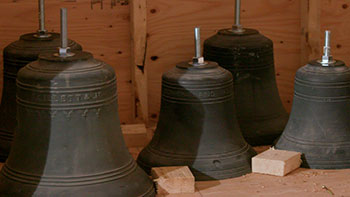
Video: Removing the carillon bells from the Peace Tower In the spring of 2022, a number of bells from the Peace Tower carillon were removed as part of the Centre Block project. They were removed so important restoration work can be done on them.
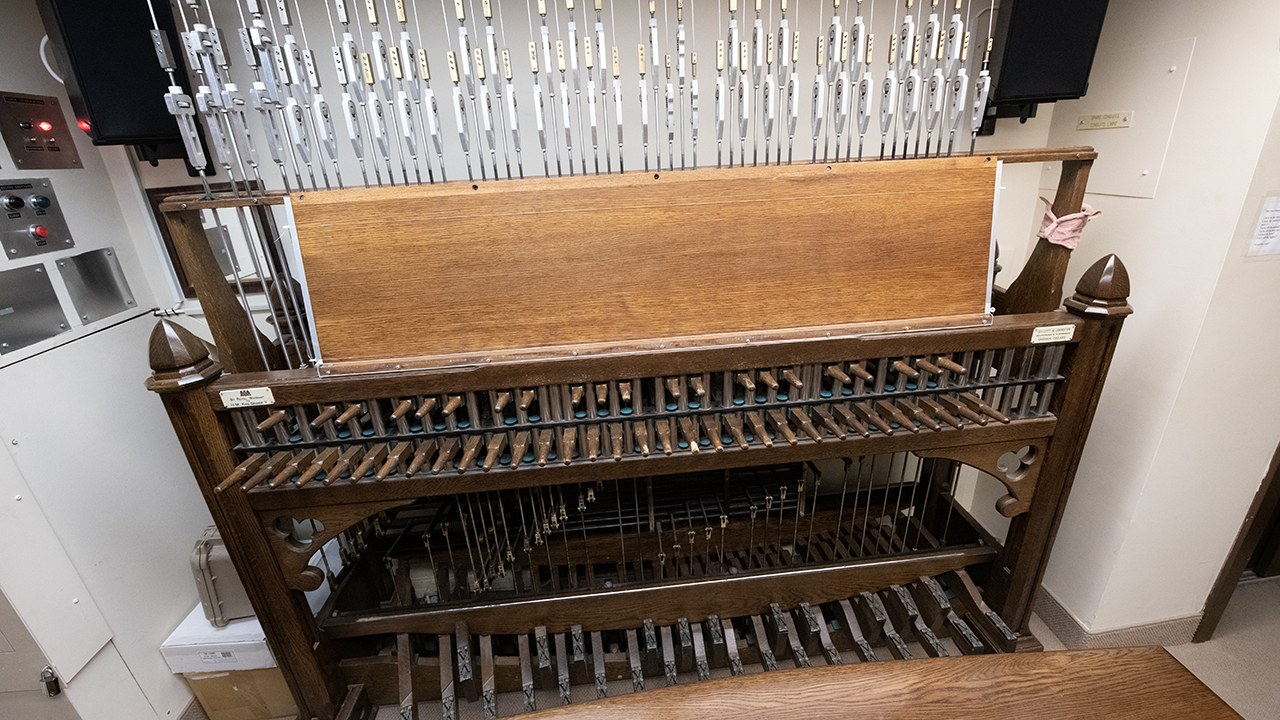
The carillon is a complex instrument. Each pedal and lever is connected to a bell of a different size. (Click to view enlarged image.)
The Peace Tower carillon was developed from the 17th-century chiming clocks in Belgium and the Netherlands. Musicians from all over the world would come to Ottawa to study this superbly tuned instrument.
House of Commons: the carillon
Memorial Chamber
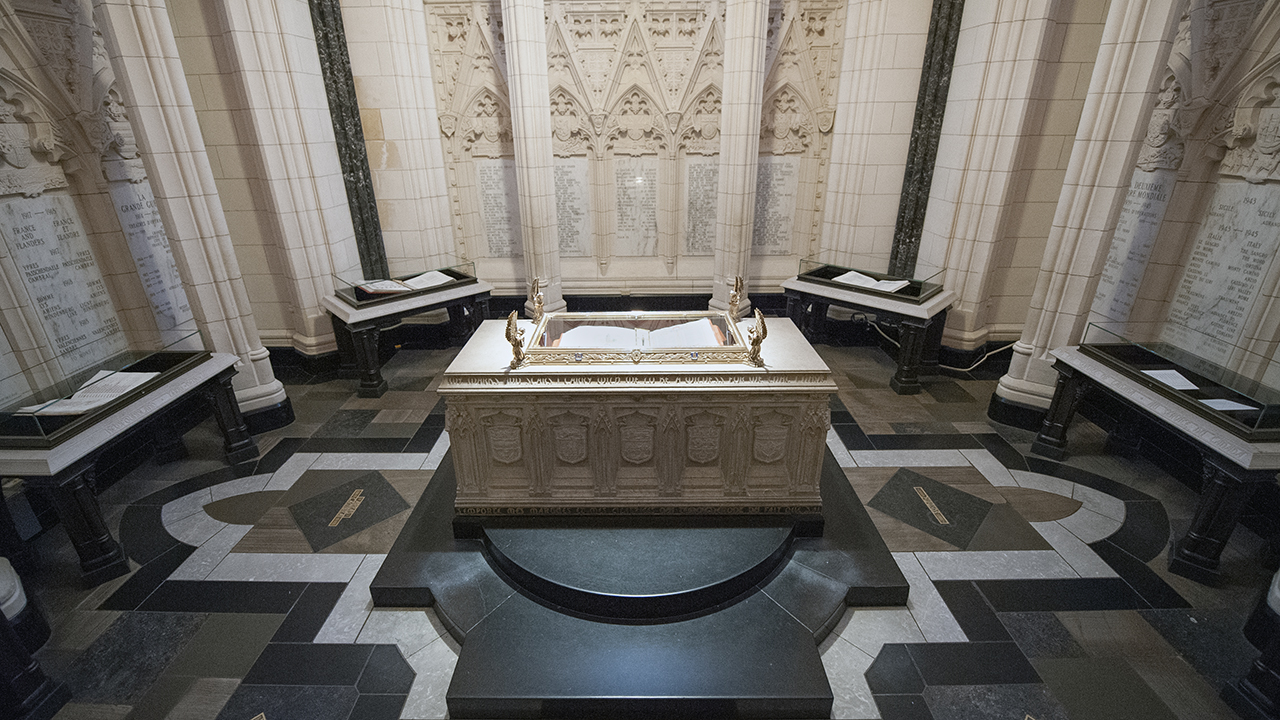
The centrepiece of the Memorial Chamber on Parliament Hill is the main altar, which holds the First World War Book of Remembrance. The altar rests on steps made of stone quarried from Flanders Fields. (Click to view enlarged image.)
The Memorial Chamber is a solemn room near the base of the Peace Tower. Built of marble, the room is dedicated to the Canadians who died in conflicts around the world.
The floor is made from stone collected from the battlefields of Europe: Ypres, Sommes, Vimy and Verdun, to name a few.
When the Centre Block was open, the Chamber contained a massive central stone altar. The altar was surrounded by 7 altars made of stone and bronze. Each altar held a different Book of Remembrance . These books contain the names of the more than 118,000 Canadians who fought and died in the service of Canada.
The books were displayed open in glass cases. At 11 o'clock every morning, 1 page was turned in each book during a ceremony.
While the Centre Block is closed for renovations, the Books of Remembrance are on display in the Parliament Welcome Centre.
Parliament Welcome Centre
The families and friends of Canada's fallen heroes can search the Books of Remembrance or contact the House of Commons Curatorial Services to learn when their loved one's name will be shown.
- Search the Books of Remembrance
- House of Commons Curatorial Services
- History of the Memorial Chamber
To mark the 100th anniversary of the First World War, the 6 wooden altars in Parliament Hill's Memorial Chamber were replaced by ones made of stone and bronze. As well, to mark the 200th anniversary of the signing of the peace treaty that ended the War of 1812, a new Book of Remembrance and altar were added to the Memorial Chamber.
Watch this video from 2015 to see the altars and to hear the story of this sacred place.
(Text on screen: To mark the 100th anniversary of the First World War, six wooden altars within Parliament Hill's Memorial Chamber were replaced by ones made of stone.
To mark the 200th anniversary of the ratification of the peace treaty that ended the War of 1812, a Book of Remembrance and altar were added to the Memorial Chamber.)
(Orchestral music in background.)
(Text on screen: The altars will continue to fully honour those who died in service.)
(View of entrance to the Memorial Chamber and the back of a constable standing in front of the central-altar, the Altar of Remembrance.)
(Ringing carillon bell.)
(Close-up of the display case containing the Korean War Book of Remembrance (1950-1953). Close-up of the display case containing the Seventh Book of Remembrance (In the Service of Canada). Close-up of the case containing the Merchant Navy Book of Remembrance. Close-up of the case containing Second World War Book of Remembrance (1939-1945). Close-up of the Newfoundland Book of Remembrance (1867-1949). Close-up of the South Africa—Nile Expedition Book of Remembrance (1884-1902).)
(The constable stands at the central altar. The book case is open and he turns a page. The constable runs his hand across names on the page. Head shot of the constable. He raises his face. Close-up of the officer's eyes.)
(Fade to black, piano instrumental in the background as the title The Memorial Chamber appears on screen.)
(Chest shot of a woman seated speaking to someone off camera, the text Johanna Mizgala, Curator of the House of Commons appears on screen.)
Curator of the House of Commons: The Memorial Chamber is a special space within Parliament and if the Peace Tower is the, sort of, spine of the building, then the Memorial Chamber really is its heart.
(View of the entrance of the Memorial Chamber with a focus on the central altar.)
(Pan shot of the chamber's ornate ceiling and a stained glass window.)
(Close-up of the bronze sculptor of a kneeling angel that adorns the case of the First World War Book of Remembrance.)
(Chest shot of a man seated in a workshop speaking to someone off camera. the text Phil White, Dominion Sculptor appears on screen.)
Dominion Sculptor: Well the altar, at least the central altar in the Memorial Chamber was created by the architect, John Pearson, to memorialize Canada's, essentially Canada's war dead from the First World War—all the people who had given their lives for king and country at the time. And, it's taken on an incredible significance because it has come to be, essentially, a focal point to memorialize not only Canada's war dead from the First World War, but also the Second War, the Korean War and other conflicts that have occurred over the last century. It's very important that these altars be replaced because, to me, it is a matter of respect, showing the utmost respect for the sacrifices that the people have made.
(Upward pan shot of the Memorial Chamber featuring the central altar then moving onto the sunlit stained glass window.)
(Upward close-up pan of page 496 of First World War Book of Remembrance.)
(Lateral pan of the side of the case of the Merchant Navy Book of Remembrance.)
(Close-up pan of pages South Africa—Nile Expedition and the Second World War Books of Remembrance.)
(Chest shot of a man seated in a workshop speaking to someone off camera.)
Dominion Sculptor: So we decided the first thing to do was to hire an architectural historian to write a paper about the Chamber and include as much research as possible about Pearson, the architect's, intentions.
(Side view of a woman in a library taking a book from the shelf and opening it.)
(Side view of a woman in a library seated at a table, reading a book and taking notes.)
(Chest shot of a woman seated speaking to someone off camera.)
Curator of the House of Commons: Canadian soldiers from the Great War, as they called it at the time, were buried where they fell. So their bodies are in Belgium and in France. They are not here on Canadian soil. This was something that was very important—that there be a record of these individuals.
(Close-ups of various framed First World War photo.)
(Close-up of architectural drawings of the Memorial Chamber.)
Curator of the House of Commons: So early on, John Pearson, the architect. His vision was that all of the names of the soldiers, and service men and women and chaplains be enshrined in that space. But as they started to get the casualty list and they started to see the extent of the losses from the Great War, it became apparent that there was no space for all of those names on the walls. So they had to think of a different strategy, and that is why we have the Books of Remembrance.
(Image of the interior wall of the Memorial Chamber.)
(Right pan close-up of a Book of Remembrance.)
(Head shot of a man seated in a workshop speaking to someone off camera.)
Dominion Sculptor: The architect intended that the space would represent a sacred grove—grove implying that the central altar is surrounded by trees, by columns of stone, by elements of the design of the room that represent trees all surrounding and protecting the central altar.
(Pan shot of the Chamber's ornate ceiling.)
(Close-up of a stone carving of an owl.)
(Close-up of a small stone carving with four intertwined shamrocks.)
(Close-up of a small stone carving of the head of a mourning angel.)
Dominion Sculptor: So the intention of the new altars is to complement the idea of the sacred grove and introduce the element of poppies surrounding—forming part of the altars—and also surrounding the central altar. So, I came up with about a dozen different sketches—just quick thumbnail sketches—on pieces of paper and presented them to the committee.
(Foreground shot of the bronze poppy design along the legs of an altar.)
(Back view of a man at a drafting table who is working on a design.)
(Face shot of a man and showing his hand drawing.)
(Close-up a hand that is creating an altar design.)
(Side close-up of a man who is concentrating at a drafting table.)
Dominion Sculptor: They involved the traditional block, pieces that were more sculptural that included big 3-D figures, pieces that included large relief carvings and pieces that were more like a table, which is a traditional way that books are shown in a library. The table idea actually worked out very well because the solid blocks actually block off a large section of the floor in the room, and the floor in the room has a fairly elaborate design in the floor that is made up of stones from various battlefield sources in Europe and they form a cross in the floor. We really did not want to cover up this cross.
(Close-up pan of three thumbnail sketches on paper.)
(Downward arch shot of the floor of the Chamber showing the patterned design.)
(Close-up of a floor brass plate carving with the inscription "Vimy Ridge Hill∇70 / Crête de Vimy côte 70".)
(Close-up of a floor brass plate carving with the inscription "Passchendaele".)
(Close-up arch shot of the original architectural drawings of the Memorial Chamber floor. The cross design is pulled out and raised to portray its design.)
Dominion Sculptor: The current altars actually do cover up the points of the cross, but the intention is to show the cross on the floor once again.
(Upward pan of an archival image of the Memorial Chamber.)
(Left pan close-up of the central altar showing a kneeling angel at each corner.)
Curator of the House of Commons: When the Memorial Chamber was constructed initially, it only had space for the one altar. So it was designed around the altar for the First World War memorial and that altar is… The stone for the altar was a gift from Great Britain.
(Close-up of the stone carving of the Canadian Coat of Arms.)
(Right pan of the stone top of an altar with tools lying on the top of the altar.)
Curator of the House of Commons: It is Hoptonwood and the Dominion Sculptor, in crafting the new altars for the other Books of Remembrance, sought to echo the design of that original altar so that the space would be a really cohesive tribute to all the Canadian fallen.
(Close-up shot of the bronze poppy design along the leg of a new altar.)
(Downward pan of the leg of a new altar.)
Dominion Sculptor: Bronze was chosen for the legs for a number of reasons. Bronze is a traditional material of memorials. There was a great memorials program that was undertaken after the First World War. Bronze sculptures were done all around the country, all across the Commonwealth really. There are a number of different artisans that have been employed. There are people who are doing stone carving, shaping of stone, letter carving and there are also people who are working in a foundry doing foundry work and people who are doing the final assembly, welding and patination of the bronze. There's also a company that has been hired to do the cases themselves, which will contain the books.
(Full shot of a stone carver working in his workshop with a fire burning in the fireplace.)
(Close-up of a stone carver carving one of the inscriptions in the altars.)
(Close-up of a stone carver's hands working on the lettering of an altar.)
(Close-up of the stone carver doing letter carving on a stone altar top.)
(Side view of a welder welding the ornate bronze frame of an altar.)
(Close-up of a welder with a welding tool welding the bronze frame of an altar.)
(Side view of a craftsperson preparing the ornate bronze frame of an altar for the final finish.)
(Close-up top view of one of the new display case which will contain the books.)
(Lateral pan of a new display case with the image of a Book of Remembrance.)
Dominion Sculptor: It feels really good to be the creator of these altars and to have had even a small contribution to the heritage of this country—the heritage of commemorating our veterans and the commemoration of our war dead.
(Upward pan of the Memorial Chamber with the new altars.)
(Right pan of the Memorial Chamber with the central altars in the foreground and the new alters in the background.)
Dominion Sculptor: It really is an honour to have been able to have been involved in this.
Curator of the House of Commons: Every name of everyone who has fallen in service to this country is there.
(Front view of the new Korean War altars.)
(Front view of the new Seventh Book of Remembrance (In the Service of Canada) altar.)
(Front view of the new Merchant Navy altar.)
(Front view of the new Second World War altar.)
(Front view of the new War of 1812 altar.)
(Front view of the new Newfoundland altar.)
(Front view of the new South Africa—Nile altar.)
Curator of the House of Commons: And that has a very profound impact when you walk the halls of this space and you get an opportunity to go in there and be quiet. It touches you in a way you that can't always describe.
(Reverse dolly shot of the exiting the Memorial Chamber with the new altars. The gate to the Chamber closes.)
(Fade to black. The following appears on the blank screen: "A collaboration between".)
(Public Works and Government Services Canada Corporate signature)
(The emblem of the House of Commons of Canada)
(Text on screen: Video produced and created by Creative Services and Multimedia and Creative Services group at Public Works and Government Services Canada.)
(Canada Wordmark)
The Memorial Chamber's stained glass windows show the journey of soldiers from the call of battle to the return home.
The stained glass is being restored as part of the Centre Block project.
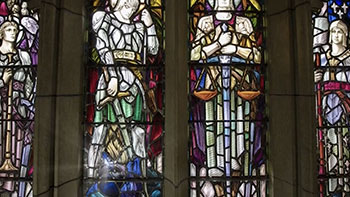
Video: Removing Centre Block’s Memorial Chamber stained glass windows See conservation specialists perform important restoration work. Work includes cleaning, fixing broken pieces of glass, replacing the edge leads and re-cementing the windows.
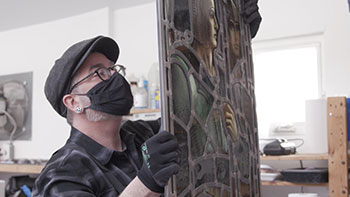
Video: Restoring Centre Block’s Memorial Chamber stained glass windows See conservation specialists perform important restoration work. Work includes cleaning, fixing broken pieces of glass, replacing the edge leads and re-cementing the windows.
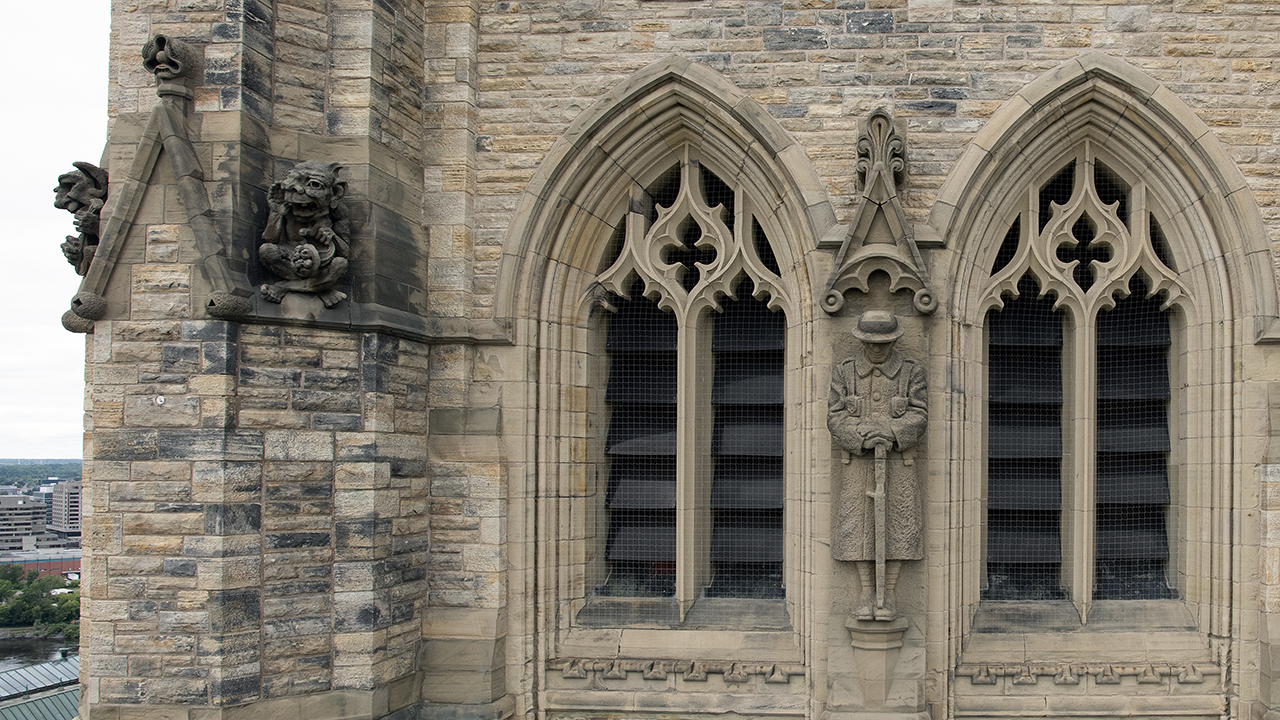
The Peace Tower features whimsical, decorative, as well as sombre stone carvings (Click to view enlarged image.)
Stone carvings of human and animal figures and ancient creatures stare down from the outer walls of the Peace Tower. Although commonly called gargoyles, these stonework figures are properly referred to by various other names depending on the style in which they are carved.
The types of stone carvings on the Peace Tower are as follows:
- A grotesque is a fanciful human or animal figure that symbolizes the desire to fight the power of evil. Grotesques are characterized by their distorted, absurd or ugly features.
- A relief is any raised sculpture that is carved into a flat panel of material. The Peace Tower contains a number of sandstone panels—called friezes—into which these types of figures are engraved.
- A boss is an ornamental block carving. Bosses made from Wallace and Birmingham Buff sandstones can be found at the ends of mouldings and arches on the Peace Tower.
- A gargoyle is a decorative waterspout or eavestrough that is carved in the form of a human or animal figure. The purpose of gargoyles is to direct rain water away from the building and to ward off evil. There are 4 such non-functional sculptures, each approximately 2.5 metres long, on the Peace Tower.
- Visit Canada's Parliament

Page details
- When to visit Ottawa
- How to Reach Ottawa
- Events & Festivals in Ottawa
- Restaurants in Ottawa
- Things To Do in Ottawa
- Ottawa Itineraries
- Ottawa Tours
- Ottawa Hotels
Peace Tower Ticket Price, Hours, Address and Reviews
- North America
- Things To Do In Ottawa
Peace Tower
- Address: Peace Tower, 111 Wellington St, Ottawa, ON K1A 0A6, Canada Map
- Phone: +1-6139924793
- Time Required: 00:30 Mins
- Tags: Landmark, Family And Kids , Tower
The Peace Tower was added to the Parliament Buildings in the 1920’s and today it is one of the finest examples of Gothic design with a number of gargoyles, friezes and other stone sculptures that adorn the tall tower.
The Memorial Chamber dedicated to the Canadians who sacrificed their lives during the Great War, has a collection of all the names of the fallen soldiers in the Books of Remembrance. The view of the city from the Peace Tower, invites locals and tourists alike and is the highlight of the place.
Peace Tower Travel Tips
- Other contact detail:+1 8665994999
Entrance Ticket Details For Peace Tower
- You do not need a ticket to access the Tower.
Peace Tower Hours
- It is best to visit the place at 9.00 am. (reach the place a few minutes early).
- The bells cover 4 1/2 octaves and during July and August, the carillon plays from 11.00 am to 12.00 pm on weekdays.
- From September to June the Peace Tower Carillon plays from 12.00 pm to 12:15 pm on weekdays.
- Recommended time of arrival is at 8.45 am.
How to Reach Peace Tower
- By Bus: Pl. Confed. Sq
- By renting a Car/ Bicycle.
Love this? Explore the entire list of places to visit in Ottawa before you plan your trip.
Fancy a good night's sleep after a tiring day? Check out where to stay in Ottawa and book an accommodation of your choice.
- Peace Tower Address: Peace Tower, 111 Wellington St, Ottawa, ON K1A 0A6, Canada
- Peace Tower Contact Number: +1-6139924793
- Time required to visit Peace Tower: 00:30 Mins
- Try the best online travel planner to plan your travel itinerary!
30.64% of people who visit Ottawa include Peace Tower in their plan
- 10 AM - 11 AM
47.13% of people start their Peace Tower visit around 10 AM - 11 AM
People usually take around 30 Minutes to see Peace Tower
58.23% of people prefer to travel by car while visiting Peace Tower
People normally club together Changing Of The Guard and Ottawa Locks while planning their visit to Peace Tower.
Peace Tower Reviews & Ratings

Attractions Nearby
- Parliament Hill
- Rideau Canal
- Canadian War Museum
- Byward Market
- National Gallery Of Canada
- Canadian Museum Of Nature
- Canada Aviation And Space Museum
- Brockville Regional Tackaberry Airport
- Lombard Glen Golf & Country Club
- High Falls Conservation Area
- Brockville Arts Centre
- Railway Museum Of Eastern Ontario
- Casselview Golf & Country Club
- Ottawa Itinerary for 2 days
- Ottawa Itinerary for 3 days
- Ottawa Itinerary for 5 days
- Visit 100 Countries
- Visit 500 UNESCO Sites
- Landmarks of the World

Our last morning in Ottawa we were up bright and early to get to the Parliament Buildings for the first tour of the day. We still had a long drive ahead of us back to Guelph so there was no sleeping in this day! We were so early, in fact, that we were there before the tours started!
The tours are free but you do still need to get a timed ticket which is on a first-come, first-serve basis. In the summer I can imagine the tickets go pretty quickly but on a cold day in January, we didn’t have any trouble getting one.
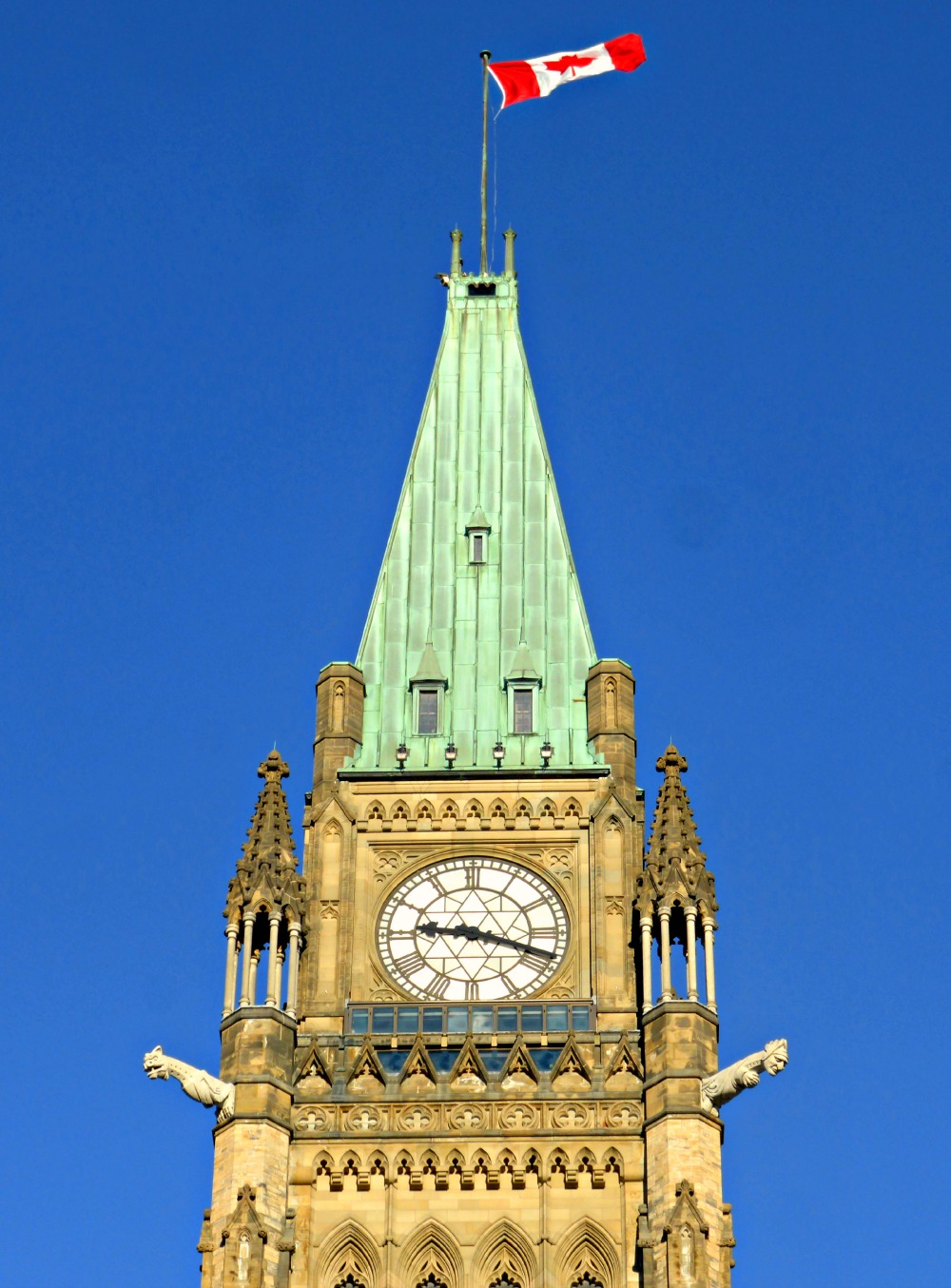
After passing through security scans, similar to those at an airport, we picked up our tickets for our tour of the Centre Block .
We knew we also wanted to see the Peace Tower and with about a half-hour before our tour started we headed right up for what was sure to be a great view of the city of Ottawa. Being the early bird paid off as we were the first ones up to the Peace Tower that day and once up there we had the whole place to ourselves!
It’s not a very big area so it was nice to be able to just roam around, take our time looking out the windows, and take as many photos of the face of the clock just above our heads as we wanted to. Or maybe that was just me taking all those photos?
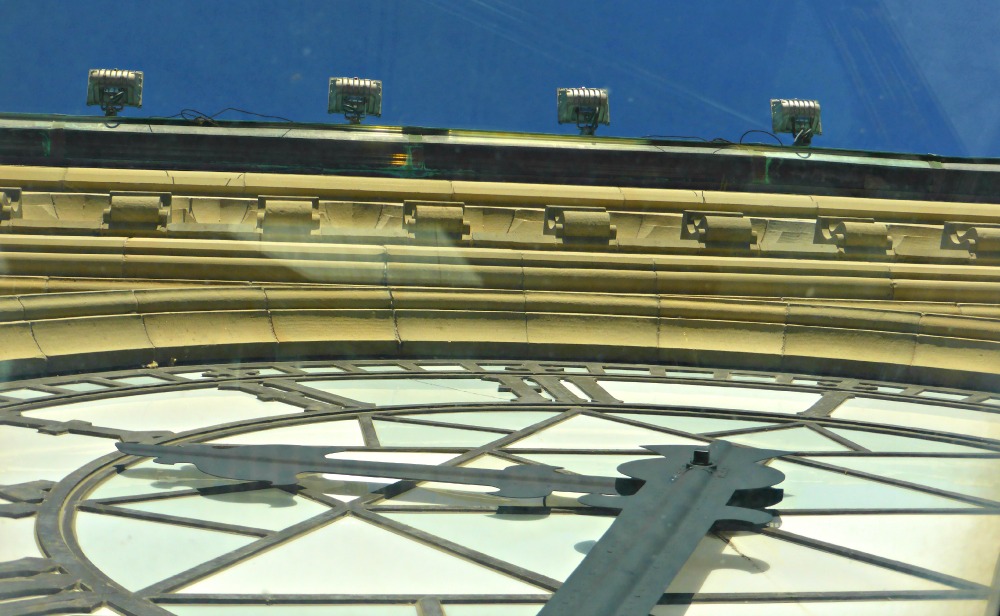
The current tower is not the original as that one, the Victoria Tower, burned in the fire in 1916. The current tower was built even taller than the original and now stands about 90 m (300 ft) high.
In keeping with the Victoria High Gothic style of the rest of the building, it includes about 370 gargoyles, grotesques, and friezes. Today it is a very well known icon, especially amongst Canadians, as we see it a lot with it being on our twenty-dollar bill .
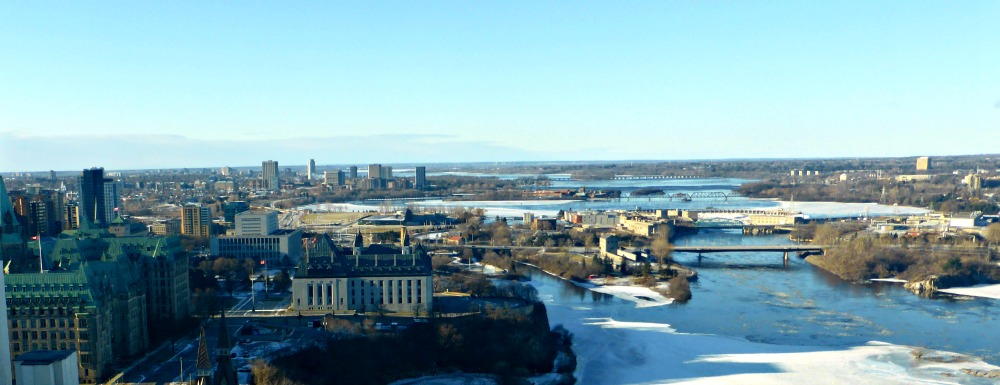
After getting our fill of the views of the city, and testing our eyesight to see if we could find all the Canadian flags within view of the Parliament Buildings (I think the sign in the tower said there were over 20 flags to be found), we then made our way back down with a stop to visit the beautiful Memorial Chamber .
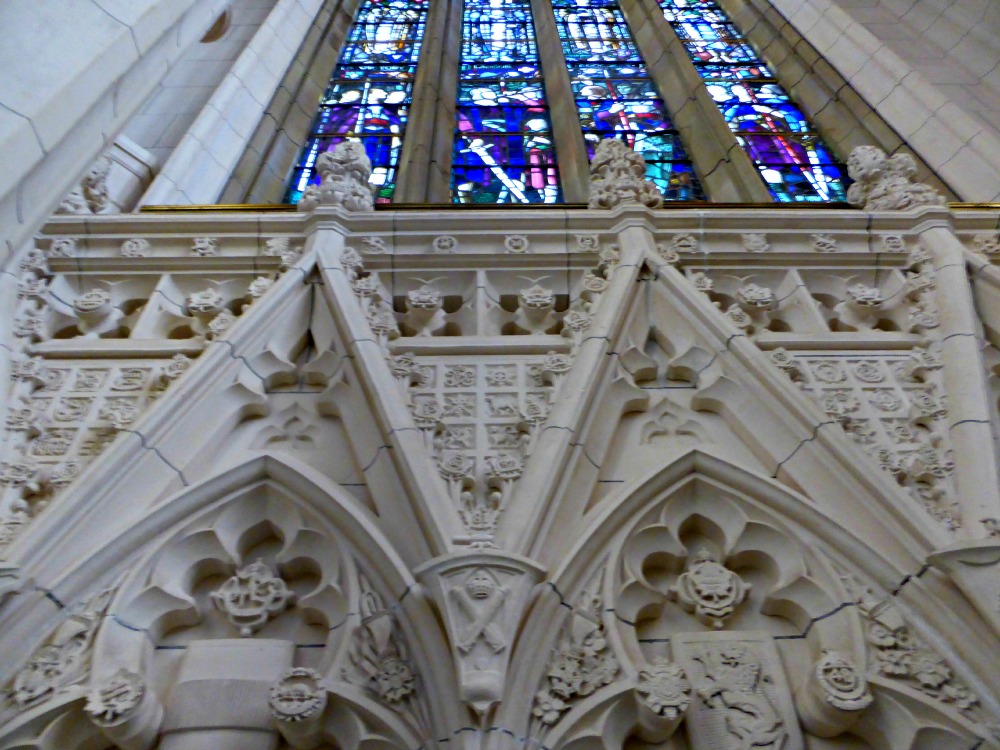
The Memorial Chamber is a quiet and sacred space, that although quite small in floor space, has a soaring ceiling and is full of symbolism and history. It isn’t as well known as the much-photographed Peace Tower and Parliament Buildings because it is experienced from within, rather than from afar. I would highly recommend anyone planning to visit to learn a little more about it before your visit because I think it will be even more moving if you know all the elements that were thoughtfully incorporated into it.
While the Tower was built by a nation grateful for peace, the Memorial Chamber was built and dedicated to the memory of Canadians who died in military service in the struggle for that peace. Originally it was designed in memory of the devastation from WWI but has since grown to include the names of all Canadians who have died in military service.
Inside the Memorial Chamber , the first thing you will likely notice is the Altar of Remembrance which rests on a base made of stone from Belgium. Embedded in the floor around the Altar are nameplates identifying the major battles that Canadians fought in during the First World War- places like Vimy, the Somme, Ypres, and Passchendaele. On top of the altar is one of seven books housed in the Chamber- all Books of Remembrance that list the names of every Canadian who has lost his or her life in military service. One page is turned every morning at eleven o’clock.
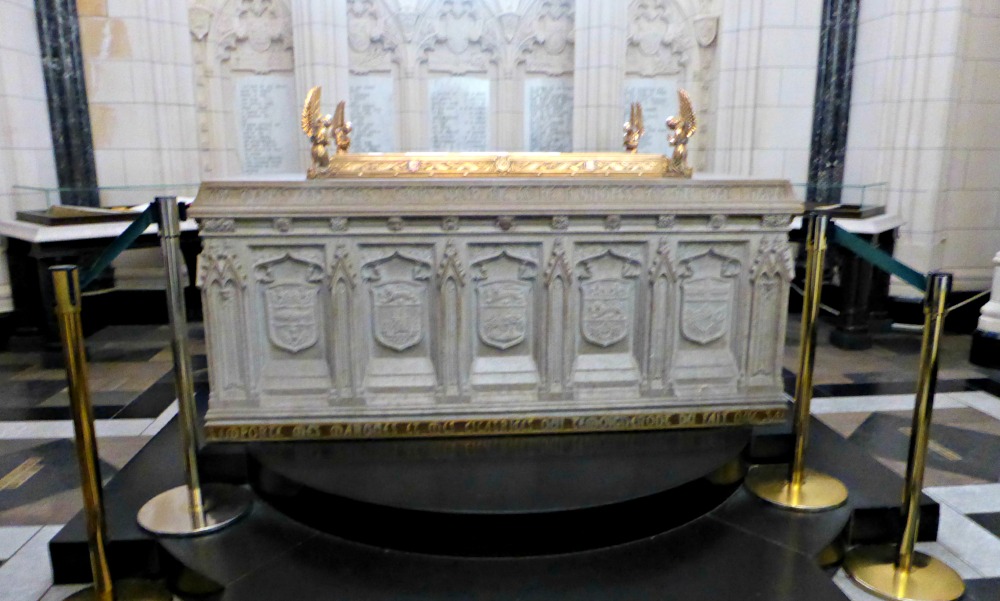
Also inside the Memorial Chamber are marble plaques recording Canada’s participation in wars throughout history, as well as plaques devoted to words such as those from John McCrae’s “ In Flanders Fields ” poem or passages from the Bible. High above everything is beautiful stained glass that allows the light to shine in and fill this beautiful little room.
Tickets aren’t required for the Peace Tower or the Memorial Chamber, however during busy times lines should be expected. None of the spaces in the Tower are very big so they will limit the number of people in each space at any given time.
From here it was time to make our way to the ground level where we would be joining our group for the guided tour of the Senate Chamber, the House of Commons, and the Library of Parliament .
RESOURCES | PLAN YOUR TRIP TO CANADA
Some of the links in the post above are affiliate links. This means if you click on the link and purchase the item, we will receive an affiliate commission but this does not affect the price to you. Please read our full disclosure policy here .

RELATED POSTS
Touring parliament hill, ottawa: the senate and the house of commons, casa loma: explore this majestic castle in toronto, canada, stepping back in canadian history with a visit to fort george, discover the lighthouses of the bay of fundy and annapolis valley region, 8 great places to visit in the annapolis valley and bay of fundy region.
The Road Home
History, travel, nature, life on vancouver island, bc, 12 things you didn’t know about the peace tower in ottawa.
It’s a Canadian icon: the tall, stately Peace Tower rising above the Centre Block of Parliament in Ottawa, Canada. The Peace Tower has stood sentinel over the nation’s capital, serving as a silent witness to the workings of government, since it was inaugurated on July 1, 1927. But there’s much more to this striking structure than first glance reveals. Below are 12 behind-the-scenes facts about this distinctive symbol of Canadian nationhood.

The tall Peace Tower is the focal point of the Centre Block of Parliament Hill in Ottawa, Canada. (Photo: Saffron Blaze, CC BY-SA 3.0 , Wikimedia Commons.)
1. The Peace Tower is 92.5 metres (302.5 feet), or 28 stories, tall (measured from the ground to the base of the flagpole). To get to the very top, you’d have to take an elevator 60 metres (200 feet) up to the observation deck below the clock, climb 10 stories of stairs and ladders, then open a hatch below the flagpole. Only a select few Parliamentary staffers are permitted to ascend beyond the observation deck.
2. The Peace Tower is the second such tower to stand on this site. The first – the 60-metre (200-foot) tall Victoria Tower, completed in 1878 – crumbled to the ground during a fire that destroyed the original Centre Block building in 1916.

The original Centre Block, featuring the central Victoria Tower, circa 1890. (Photo: Library and Archives of Canada, Public Domain.)
3. The Peace Tower is dedicated to the more than 65,000 Canadian soldiers who lost their lives in World War I. Behind the large stained glass windows directly above the arched entry porch is a room called the Memorial Chamber, home to altars and books of remembrance commemorating all Canadians who have given their lives in military service. The floor of the Memorial Chamber contains stones collected from battlefields in England, France and Belgium.
4. The Peace Tower is a free-standing bell tower , called a campanile. It is a completely separate structure from the Centre Block. The two buildings are connected via a short covered passageway.

The Peace Tower under construction in 1921. The tall windows of the second story are the future Memorial Chamber. The walls of the enclosed passageway connecting the tower and the Centre Block are clearly visible. (Photo: House of Commons of Canada, Public Domain.)
5. The Peace Tower houses a 53-bell carillon , one of the oldest and finest in North America. Each bell is a different size: the smallest weighs 10 pounds (4.5 kilograms) and the largest – which tolls the hour – weighs 22,244 pounds (10,090 kilograms), about the size of three large elephants. The carillon is operated by the Dominion Carillonneur, who sits in a room mid-way up the tower and plays a keyboard connected to each bell clapper.

6. The flag atop the Peace Tower is changed every weekday , except on holidays and in inclement weather. This job is handled by the Flag Master, who raises and lowers about 250 flags on the Peace Tower flagpole each year. The flag is also changed whenever it is flown at half mast. Canadians can request a flag flown from the Peace Tower , but the waiting period as of May 2018 was 99 years.

7. The hands of the Peace Tower clock cannot be turned backwards. The clock was built in 1927 and uses old mechanisms. At 2 a.m. every autumn, when Daylight Savings Time ends, the clock is stopped for a full hour to account for the time change.
8. The Peace Tower is adorned with approximately 370 stone carvings , most of which depict Canadian flora, fauna and historical elements. The carvings are maintained by the Dominion Sculptor, who oversees all sculptural elements on the Parliament Buildings. Scan the Peace Tower for the following types of carvings:
- gargoyles – or decorative waterspouts – four of which project from the upper section of the tower, just below the clock.
- grotesques – or fantastical animal or humans figures, often with strange or distorted features – peering out from corners, nooks, walls and borders.
- bosses – or ornamental block carvings – gracing the ends and edges of window mouldings and arches.
- friezes – or sandstone panels featuring raised relief sculpture – found on flat surfaces of the building.
- symbols of heraldry — or figures holding shields of arms — adorning the main (south) entrance.

9. The elevator to the observation deck, located one story below the clock, runs on a 10 percent incline for the first 30 metres (98 feet) of its journey, covering a horizontal distance of 3.7 metres (12.2 feet) – but you’d never know it, as the car remains level at all times. From the large windows of the observation deck — 60 metres (200 feet) above the ground — you can enjoy a 360-degree view of the surrounding area, then gaze up at a massive clock face measuring 4.8 metres (16 feet) in diameter. Visit the observation deck on a Parliamentary tour .

10. Four gargoyles, or carved stone waterspouts, stretch out like short arms from the upper section of the Peace Tower , just below the clock. Each gargoyle measures 2.5 metres (8.3 feet) long, 0.75 metres (2.5 feet) high and 0.45 metres (1.5 feet) thick. The gargoyles are carved from Quebec granite and are strictly decorative; they do not funnel water from the tower roof.

Closeup of the tower’s southeast facing gargoyle, over 8 feet long. (Photo: D. Gordon E. Robertson, CC BY-SA 3.0 or GFDL , Wikimedia Commons.)
11. The exterior walls of the Peace Tower are made from cream-coloured sandstone quarried in Nepean, Ontario, about 16 kilometres (10 miles) west of Parliament Hill. The same type of sandstone was also used to build the Centre, East and West Blocks. Look for a natural outcropping of Nepean sandstone alongside Highway 417, at the high-point of land just east of Kanata.
12. The Peace Tower, together with the Centre Block, is one of the finest examples of Modern Gothic Revival architecture in Canada. Both buildings were designed by Toronto-based architect John A. Pearson and Montreal-based architect Jean-Omer Marchand in 1916. The Peace Tower was inaugurated on July 1, 1927, on the 60 th anniversary of Canadian Confederation.
For more information about the Peace Tower, visit Government of Canada – Explore the Peace Tower .

The Peace Tower and Centre Block blaze with colour during the 2018 Northern Lights sound and light show. (Photo: Caroline Ross, The Road Home.)
In all my thoughts of the tower, peace was dominant. I believe there is a quiet peaceful dignity about it….no matter what troubles and worries and differences of opinion take place in the building. I feel that one cannot approach the building up the centre road without experiencing its mute appeal for toleration, moderation, dignity and peace. ~ John A. Pearson, architect responsible for designing the Centre Block, in a letter to Prime Minister Mackenzie King shortly before the opening of the Peace Tower.
Share this:
Related posts, this week in history (1915): a steal of a deal on property in the millar addition, this week in history (1921): twelve bottles a day, this week in history (1942): a noiseless new year, a call for billets, and a debate to stop traffic, this week in history (1977): coffee rush prompts rationing, this week in history (1938): new flight links prince george and vancouver, this week in history (1957): historic building gutted by fire, 7 thoughts on “ 12 things you didn’t know about the peace tower in ottawa ”.
Pingback: Happy Canada Day! 🇨🇦 – the A word | architecture
WW1 battlefields in England?!
Yep, you can find more information about the stone and how it was obtained here! https://www.ourcommons.ca/About/HistoryArtsArchitecture/heritage_spaces/memorial/memorial-e.htm
Did the original Peace Tower (before the fire) have an “All Seeing Eye” where the clock is now? Or is that a myth?
i loved the experiences of the site
The most beautiful work of Canadian architecture our country owns
You said it! The Peace Tower and Parliament Buildings are something special.
Leave a comment Cancel reply

- Already have a WordPress.com account? Log in now.
- Subscribe Subscribed
- Copy shortlink
- Report this content
- View post in Reader
- Manage subscriptions
- Collapse this bar

- Visit Our Blog about Russia to know more about Russian sights, history
- Check out our Russian cities and regions guides
- Follow us on Twitter and Facebook to better understand Russia
- Info about getting Russian visa , the main airports , how to rent an apartment
- Our Expert answers your questions about Russia, some tips about sending flowers

Russian regions
- Adygeya republic
- Astrakhan oblast
- Kalmykia republic
- Krasnodar krai
- Rostov oblast
- Volgograd oblast
- North Caucasus
- Map of Russia
- All cities and regions
- Blog about Russia
- News from Russia
- How to get a visa
- Flights to Russia
- Russian hotels
- Renting apartments
- Russian currency
- FIFA World Cup 2018
- Submit an article
- Flowers to Russia
- Ask our Expert
Southern Federal District, Russia
Southern federal district - overview.
The Southern Federal District is a federal district of the Russian Federation located in the south of its European part, in the lower reaches of the Volga River, north of the Greater Caucasus Range. The city of Rostov-on-Don is the administrative center of the district. The main sea resorts of Russia (Sochi, Anapa, Gelendzhik) are located on the territory of this federal district.
The population of the Southern Federal District is about 14,086,000 (2016), the area - 420,876 sq. km.
South district map, Russia
Southern federal district - features.
The federal district under the name of the North Caucasian Federal District was formed by the decree of the Russian President on May 13, 2000. On June 21, 2000, it was renamed the Southern Federal District. Initially, this federal district included the republics of the North Caucasus and the Stavropol Krai, which, in 2010, became parts of a separate North Caucasian Federal District.
In 2016, the Crimea and the city of Sevastopol were included in the Southern Federal District. Today, the Crimea is the object of territorial disagreements between Russia, de facto controlling this territory since March 2014, and Ukraine. Most of the UN member states continue to consider the entire Crimea as part of Ukraine.
In the west, the Southern Federal District borders Ukraine, in the east - Kazakhstan. In the east, it is also washed by the Caspian Sea, in the west - by the Azov Sea and the Black Sea.
South of Russia is characterized by a variety of landscapes (mixed, coniferous, deciduous forests, steppes, subalpine meadows). The average temperature in January is minus 4.4 degrees Celsius, in July - plus 24.6 degrees Celsius.
The Southern Federal District has significant reserves of thermal and mineral waters, tungsten, coal, oil on the shelf of the Caspian Sea.
The main branches of the local economy are extraction and processing of thermal and mineral waters, mining industry, tourism, agriculture, production of building materials.
Nature of the Southern Federal District
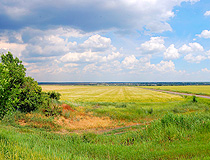
Krasnodar region
Author: Vladislav Shutyy
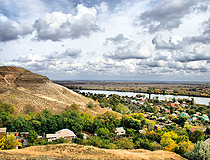
Rostov region
Author: Igor Tartanov
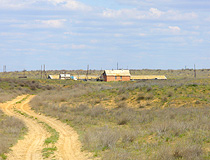
Astrakhan region
Author: Dvornikov Mikhail
Southern Federal District - Cities and Regions
South Federal District includes the following 6 federal subjects of Russian Federation:
The largest cities of South Federal District are:
- Novorossiysk
South district of Russia photos
Sights of the southern federal district.
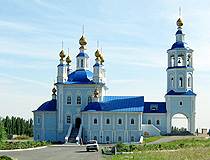
Cathedral in the Rostov region
Author: Nikolay Sevastyanov
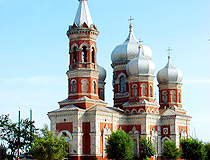
Church in the Volgograd region
Author: Aleksandr Tuznichenko
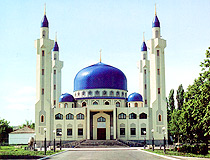
Mosque in Maykop
Author: Radjeb Tsey
- Currently 2.67/5
Rating: 2.7 /5 (837 votes cast)

COMMENTS
The Peace Tower is one of Canada's most emblematic symbols. Visitors to Ottawa can climb the historic tower and enjoy a spectacular view of the city. If you visit Parliament Hill between September and June, you can enjoy a carillon performance from noon until 12:15 on weekdays. There is a one hour recital beginning at 11 AM during the summer ...
The peace tower is offered as a separate tour from the parliament guided tour. If you have plans to do the parliament guided tours, then avoid doing this as a separate tour and avoid going through the security check. At the end of the guided parliament tour, the guide will offer you an opportunity to go up to the tower. ...
Peace Tower. The Peace Tower (French: Tour de la Paix) is a focal bell and clock tower sitting on the central axis of the Centre Block of the Canadian parliament buildings in Ottawa, Ontario. The present incarnation replaced the 55-metre (180 ft) Victoria Tower, after the latter burned down in 1916, along with most of the Centre Block; only the ...
Welcome to our exploration of the Peace Tower, an iconic symbol of Canada's national identity located on Parliament Hill in Ottawa. Standing at an impressive...
Peace Tower - Centre Block at Parliament Hill Ottawa. A tour of the Parliament Buildings does require a ticket, which is free for the asking on a first-come first-served basis. Tickets are distributed from the tourist information center at 90 Wellington West - directly across the street from Parliament Hill.
HOW TO PLAN YOUR TOUR BEFORE CENTRAL BLOCK CLOSING. SAME DAY FREE tickets for guided tours (individuals and groups with fewer than 10 people) of Centre Block and the Peace Tower and Memorial Chamber are available on a first-come, first-served basis at 90 Wellington Street, across from Parliament Hill.
Tickets for the Viðey ferry must be reserved, with a limit of 5 tickets per booking, and a total of 1,200 tickets available. Further information is available on the Elding website. ... Program Related to the IMAGINE PEACE TOWER: • 7:45 PM: Valdimar Guðmundsson and Örn Eldjárn perform music by the IMAGINE PEACE TOWER. • 7:58 PM: ...
Peace Tower carillon. The Peace Tower carillon is one of the oldest and finest carillons in North America. It includes 53 bells and weighs 54 tonnes. These bells range in weight from 10,090 kilograms to only 4.5 kilograms. The bourdon is the largest and heaviest bell and plays the low note E.
The Peace Tower tour was great fun, the view from the top is amazing, and the tour staff at the parliament buildings is all so friendly :) IMPORTANT NOTE: tickets for the full Parliament Buildings tours as well as the Pease Tower tours are free, but must be booked from the building across the road from the parliament buildings. The ticket place ...
Book your tickets online for Peace Tower, Ottawa: See 1,308 reviews, articles, and 535 photos of Peace Tower, ranked No.6 on Tripadvisor among 482 attractions in Ottawa. ... Each morning an honour guard enters this small room in the Peace Tower, unlocks the glass cases that hold these books and turns one page so that during the year every ...
Check out where to stay in Ottawa and book an accommodation of your choice. Peace Tower Address: Peace Tower, 111 Wellington St, Ottawa, ON K1A 0A6, Canada. Peace Tower Contact Number: +1-6139924793. Time required to visit Peace Tower: 00:30 Mins. Try the best online travel planner to plan your travel itinerary!
The Peace Tower is not only a very significant piece of Canadian history but it allows a beautiful view of Ottawa and Gatineau! ... One had to queue to get free tickets and missed out on the Parliament building but were given free tickets for the 12.00 trip up to the Peace Tower. After 20 minutes of queueing, baggage search, security twice one ...
The current tower is not the original as that one, the Victoria Tower, burned in the fire in 1916. The current tower was built even taller than the original and now stands about 90 m (300 ft) high. In keeping with the Victoria High Gothic style of the rest of the building, it includes about 370 gargoyles, grotesques, and friezes.
2. The Peace Tower is the second such tower to stand on this site. The first - the 60-metre (200-foot) tall Victoria Tower, completed in 1878 - crumbled to the ground during a fire that destroyed the original Centre Block building in 1916. The original Centre Block, featuring the central Victoria Tower, circa 1890.
The curator of the House of Commons, Johanna Mizgala tells reporter Blair Crawford about Ottawa's most recognizable landmarks, the Peace Tower and the hidden...
The Disney Vacation Club Elements of Magic Sweepstakes offers the chance to win a 6-night, 7-day vacation at the Island Tower, plus 7-day Walt Disney World Resort theme park tickets, and round-trip transportation for you and up to four guests. You earn one entry by registering and can earn up to 60 additional entries by watching "Elements of Magic: Stories Behind Island Tower," a ...
Top Rostov-on-Don Cultural Tours: See reviews and photos of Cultural Tours in Rostov-on-Don, Russia on Tripadvisor.
Aksay (Russian: Аксай) is a town and the administrative center of Aksaysky District in Rostov Oblast, Russia, located on the right bank of the Don River, 18 kilometers (11 mi) northeast of Rostov-on-Don, the administrative center of the oblast.Population: 41,969 (2010 Census); [3] 38,012 (2002 Census); [7] 33,389 (1989 Soviet census). [8] It was previously known as Ust-Aksayskaya (until ...
Most Recent: Reviews ordered by most recent publish date in descending order. Detailed Reviews: Reviews ordered by recency and descriptiveness of user-identified themes such as wait time, length of visit, general tips, and location information.
Southern Federal District - Overview. The Southern Federal District is a federal district of the Russian Federation located in the south of its European part, in the lower reaches of the Volga River, north of the Greater Caucasus Range. The city of Rostov-on-Don is the administrative center of the district. The main sea resorts of Russia (Sochi, Anapa, Gelendzhik) are located on the territory ...